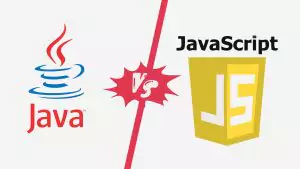Exception handling plays a crucial role in Java programming, allowing developers to create robust and reliable code. When errors or exceptional situations occur during program execution, throwing exceptions provides a mechanism to handle them gracefully. In this guide, we will explore the concept of throwing exceptions in Java, understand its importance, and learn how to effectively utilize this feature.
Understanding Exceptions in Java
Before diving into the details of throwing exceptions, let’s briefly understand what exceptions are in Java. An exception is an event that occurs during the execution of a program, disrupting the normal flow of operations. It represents an error condition or an exceptional circumstance that requires special handling.
Types of Exceptions in Java
In Java, exceptions are categorized into two main types: checked exceptions and unchecked exceptions.
Checked Exceptions
Checked exceptions are exceptions that must be declared in a method’s signature using the throws keyword or handled within a try-catch block. These exceptions are checked by the compiler at compile-time to ensure that they are properly handled. Examples of checked exceptions include FileNotFoundException, IOException, and SQLException.
Unchecked Exceptions
Unchecked exceptions, also known as runtime exceptions, do not need to be declared or caught explicitly. They occur during the execution of a program and are not checked by the compiler. Examples of unchecked exceptions include NullPointerException, ArithmeticException, and ArrayIndexOutOfBoundsException.
Throwing Exceptions in Java
To throw an exception in Java, you can use the throw statement followed by the exception object you wish to throw. Every exception includes a message that provides a human-readable description of the error. It is recommended to use custom exceptions instead of generic ones to provide more specific information.
Here’s an example of throwing a custom exception:
throw new CustomException("This is a custom exception message");Handling Exceptions with Try-Catch Blocks
When an exception is thrown, it needs to be handled appropriately to prevent the program from terminating abnormally. This is done using try-catch blocks. A try block contains the code that might throw an exception, while a catch block is used to catch and handle the exception.
try {
// Code that might throw an exception
} catch (ExceptionType1 exception1) {
// Handle exception1
} catch (ExceptionType2 exception2) {
// Handle exception2
} finally {
// Code that always executes, regardless of exception occurrence
}By catching specific exception types, you can provide tailored handling mechanisms for different types of exceptions. The finally block is optional and is used to specify code that should execute regardless of whether an exception occurred or not.
Creating Custom Exceptions
In addition to the built-in exceptions provided by Java, you can create your own custom exceptions to handle specific error conditions in your application. Custom exceptions can provide additional information about the problem and allow for more precise error handling.
To create a custom exception, you need to extend the Exception class or one of its subclasses. It is recommended to follow the naming convention and include a descriptive message as part of the exception.
public class CustomException extends Exception {
public CustomException(String message) {
super(message);
}
}Best Practices for Exception Handling
To ensure effective exception handling in your Java code, consider the following best practices:
- Use meaningful exception messages: Provide clear and descriptive error messages to aid in troubleshooting and debugging.
- Throw exceptions early: Identify potential exceptional conditions and throw appropriate exceptions as early as possible to handle them effectively.
- Use try-with-resources: When dealing with resources that need to be closed, such as file streams or database connections, utilize the try-with-resources statement to automatically handle resource closure.
- Follow the principle of least astonishment: Ensure that exception handling behavior is intuitive and aligns with the expectations of developers using your code.
- Log exceptions: Logging exceptions can provide valuable information for diagnosing and resolving issues. Utilize logging frameworks like Log4j or the built-in Java logging API to log exceptions.
Conclusion
Exception handling is a vital aspect of Java programming that allows developers to gracefully handle errors and exceptional situations. By understanding how to throw exceptions, handle them using try-catch blocks, and create custom exceptions, you can build more robust and reliable Java applications. Remember to follow best practices for exception handling to enhance the maintainability and stability of your code.
By employing proper exception handling techniques, you can significantly improve the quality and reliability of your Java applications, providing a better experience for both developers and end-users.
FAQ
What happens if an exception is not handled in Java?
If an exception is not handled in Java, it propagates up the call stack until an appropriate exception handler is found. If no handler is found, the program terminates and an error message is displayed.
Why do we need to throw exceptions in Java?
Throwing exceptions in Java serves several purposes. It allows developers to indicate exceptional conditions or errors that may occur during program execution. By throwing exceptions, developers can handle errors gracefully and provide appropriate error messages or take specific actions based on the type of exception thrown.
How does throwing an exception help in Java programming?
Throwing exceptions helps in Java programming by providing a structured way to handle exceptional conditions. It allows for separation of normal program flow and error handling logic. By throwing exceptions, developers can ensure that errors are caught and dealt with appropriately, promoting code reliability and maintainability.
What is the purpose of try-catch blocks in Java?
Try-catch blocks in Java are used for exception handling. The try block contains the code that may throw an exception. If an exception occurs within the try block, it is caught by the corresponding catch block. The catch block allows developers to handle the exception gracefully, providing specific error-handling logic based on the type of exception caught.
Can I have multiple catch blocks for a single try block?
Yes, it is possible to have multiple catch blocks for a single try block in Java. This allows you to catch different types of exceptions separately and provide specific error-handling mechanisms for each type. The catch blocks are evaluated sequentially, and the first matching catch block is executed.
Follow us on Reddit for more insights and updates.





Comments (0)
Welcome to A*Help comments!
We’re all about debate and discussion at A*Help.
We value the diverse opinions of users, so you may find points of view that you don’t agree with. And that’s cool. However, there are certain things we’re not OK with: attempts to manipulate our data in any way, for example, or the posting of discriminative, offensive, hateful, or disparaging material.